In the diagram shown in figure, match the following (g=10m/s2)
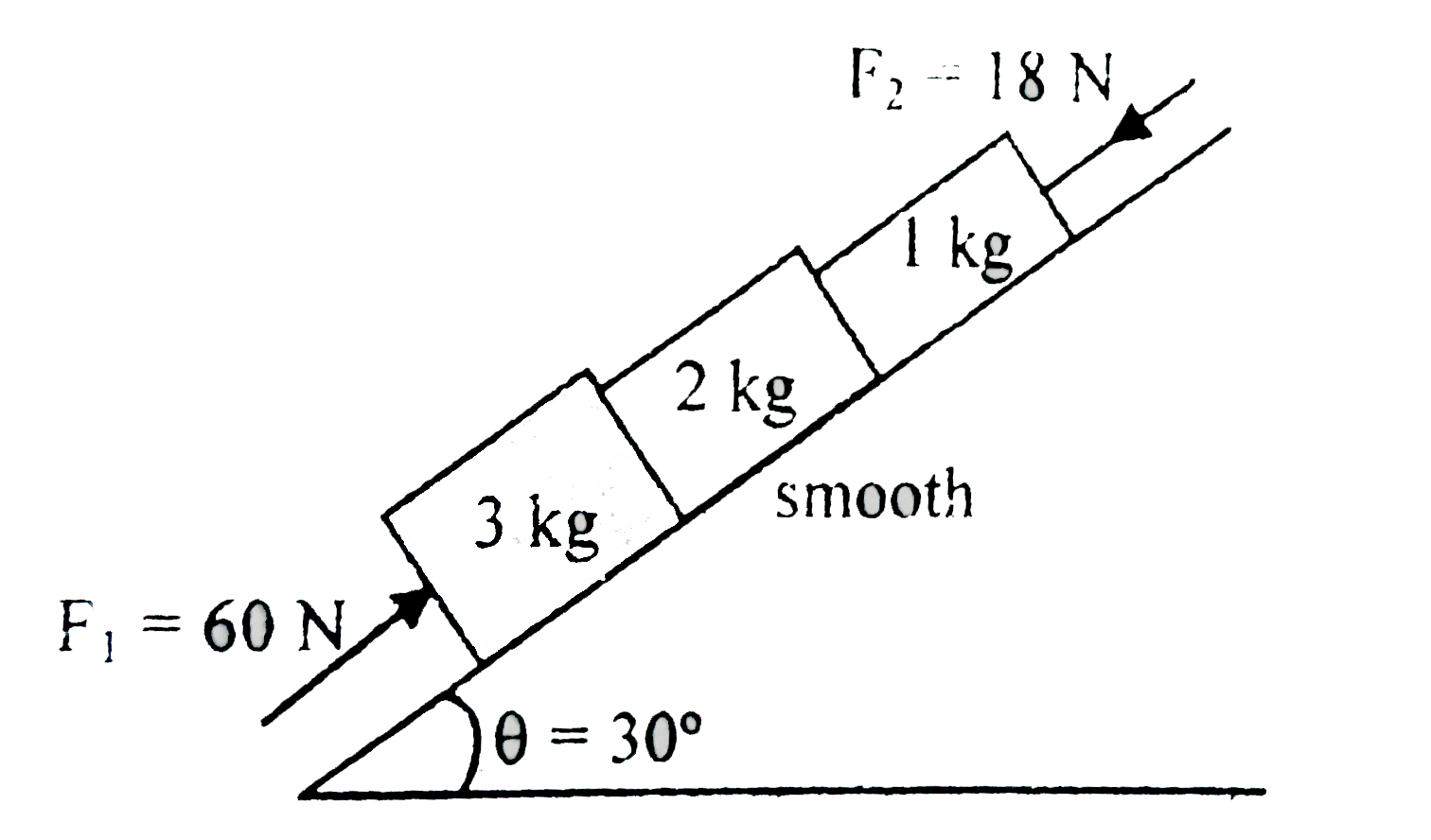
Column-IColoumn-II(A)Acceleration of 2kg block(P)8 Si unit(B)Net force on 3kg block(Q)25 SI unit(C)Normal reaction between 2 kg and 1kg(R)2 SI unit(D)Normal reaction between 3 kg and 2kg (S) 45 SI unit(T) None
The correct Answer is:R
T
Q
T
(A) a=42N−6×g×sin30∘6=2m/s2
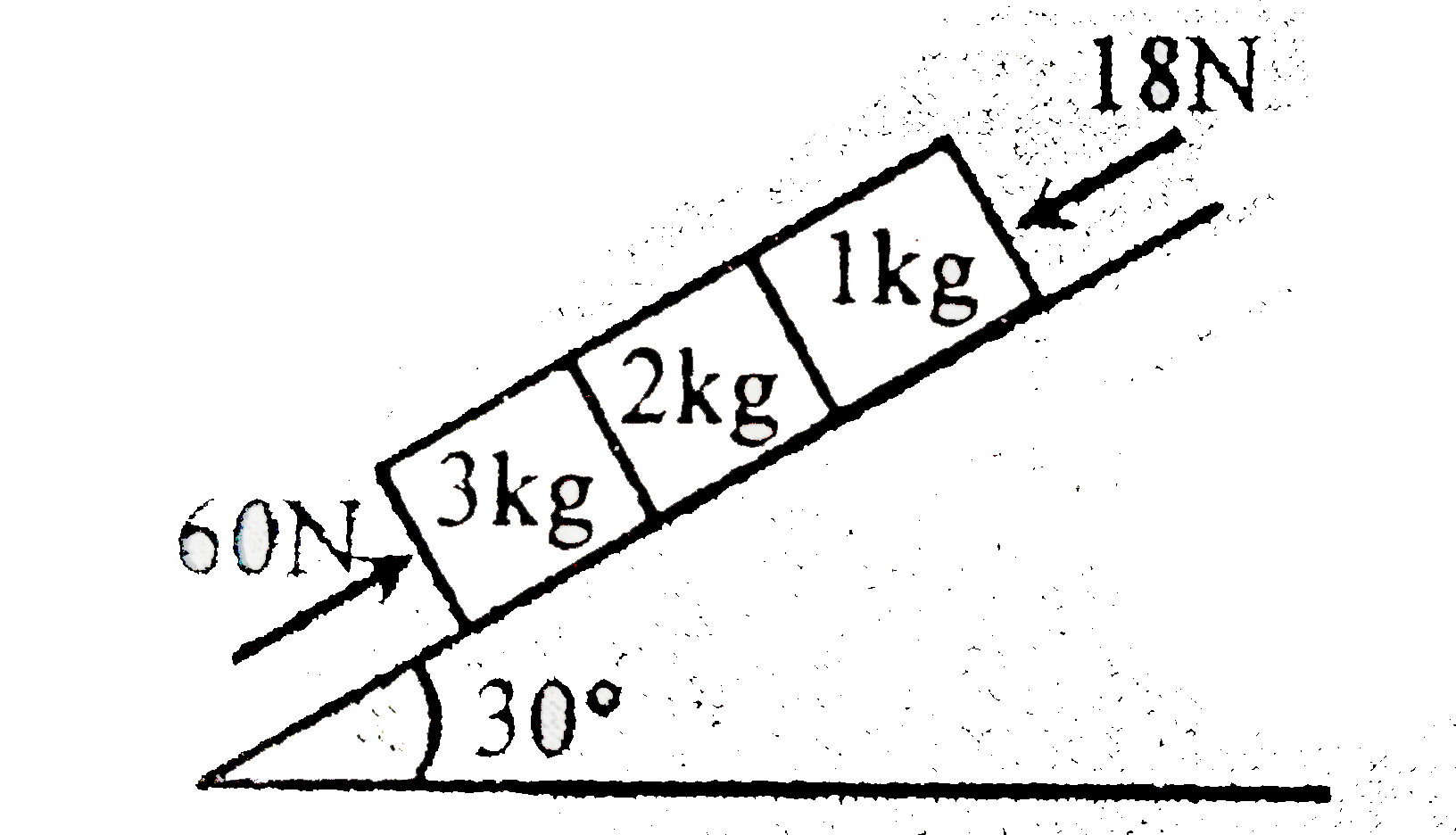
(B) Fnet on 3kg =3xa=6N
(C) R1−1×gsin30∘−18=1×a
R1=18+5+2=25N
(D)60N−R2−3×gsin30∘=3×2
R2=60−15−6=39N
Topper's Solved these Questions
- BOOK - BANSALCHAPTER - TEST PAPERSEXERCISE - PHYSICS PART- C4videos
TEST PAPERS
- BOOK - BANSALCHAPTER - TEST PAPERSEXERCISE - PHYSICS866videos
TEST PAPERS
- BOOK - BANSALCHAPTER - TEST PAPERSEXERCISE - PHYSICS PART C14videos
TEST PAPERS
- BOOK - BANSALCHAPTER - SEMICONDUCTORSEXERCISE - CBSE Question32videos
SEMICONDUCTORS
Similar Questions
In the diagram shown in figure, match the following columns (take g=10ms−2)

Column IColumn II(A) Normal reaction(p) 12 SI unit(B) Force of friction(q) 20 SI unit(C) Acceleration of block(r) zero(s) 2 SI unitView SolutionIn the diagram shown in figure. Match the following columns.
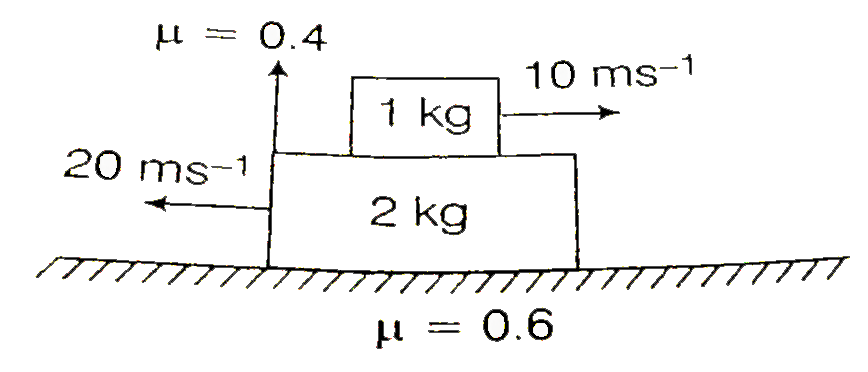
Colmun IColumn II(A) Absolute acceleration of 1 kg block(p)11ms−2(B) Absolute acceleration of 2 kg block(q)6ms−2(C) Relative acceleration between the two(r)17ms−2(s)NoneView Solution
Knowledge Check
- Question 1 - Select One
Find the nomral force between 2 kg and 3 kg blocks.
 AzeroB20 NC30 ND10 N
AzeroB20 NC30 ND10 N
A balloon rises up with constant net acceleration of 10m/s2. After 2 s a particle drops from the balloon. After further 2 s match the following : (Takeg=10m/s2)
Column IColumn II(A)Height of perticle from ground(p)Zero(B)Speed of particle(q)10SIunits(C)Displacement of Particle(r)40SIunits(D)Acceleration of particle(s)20SIunitsView SolutionFor the velocity -time graph shown in figure, in a time interval from t=0 to t=6s, match the following:
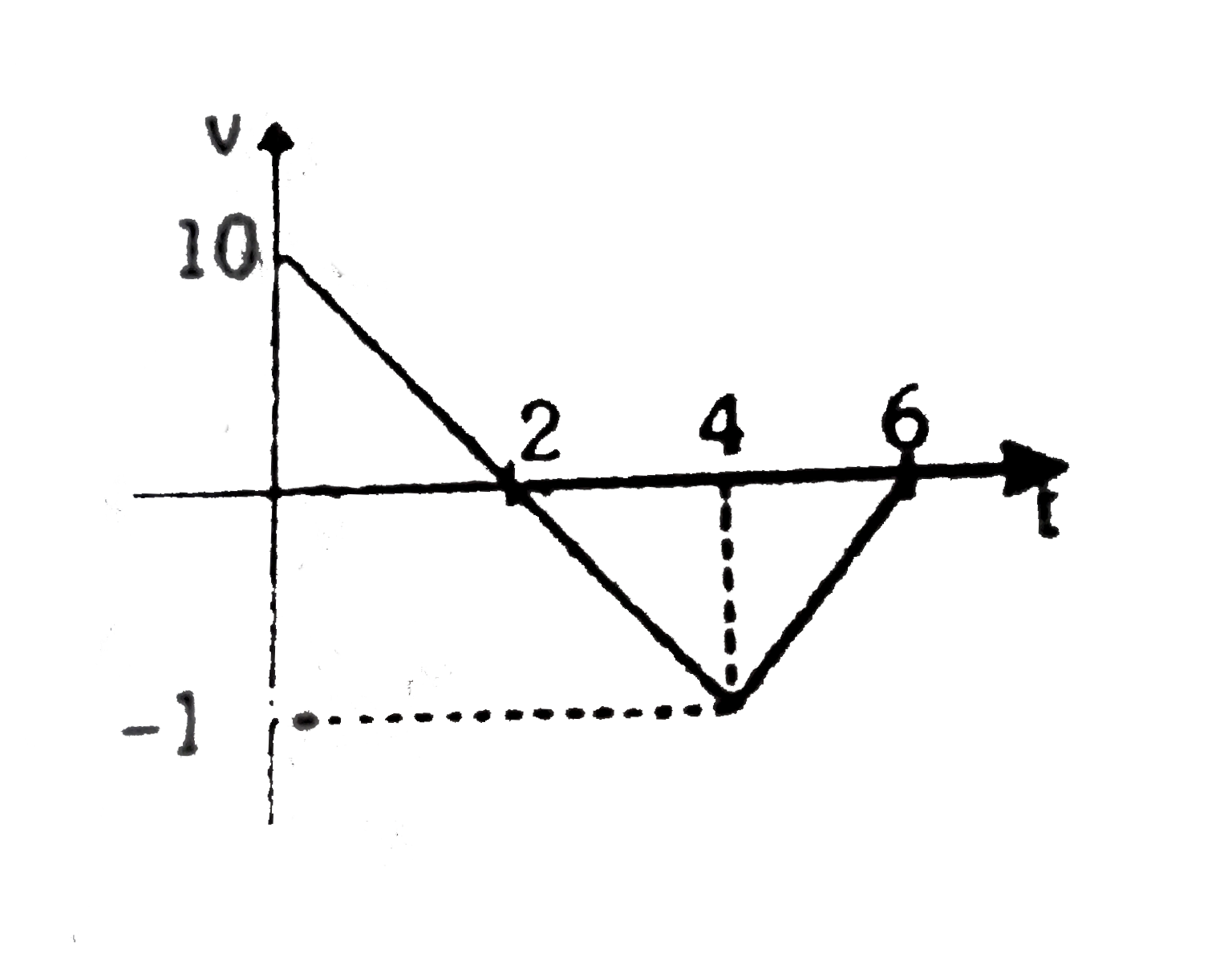
Column IColumn II(A)Change in velocity(p)−5/3SIunit(B)Average acceleration(q)−20SIunit(C)Total displacement(r)−10SIunit(D)Acceleration ay t=3s(s)−5SIunitView SolutionTwo blocks of masses m1=5 kg and m2=2 kg are connected by threads which pass over the pulleys as shown in the figure. The threads are massless and the pulleys are massless and smooth. The blocks can move only along the vertical direction T1andT2 are the tensions in the string as shown. Now match the following: (Takeg=10m/s2)
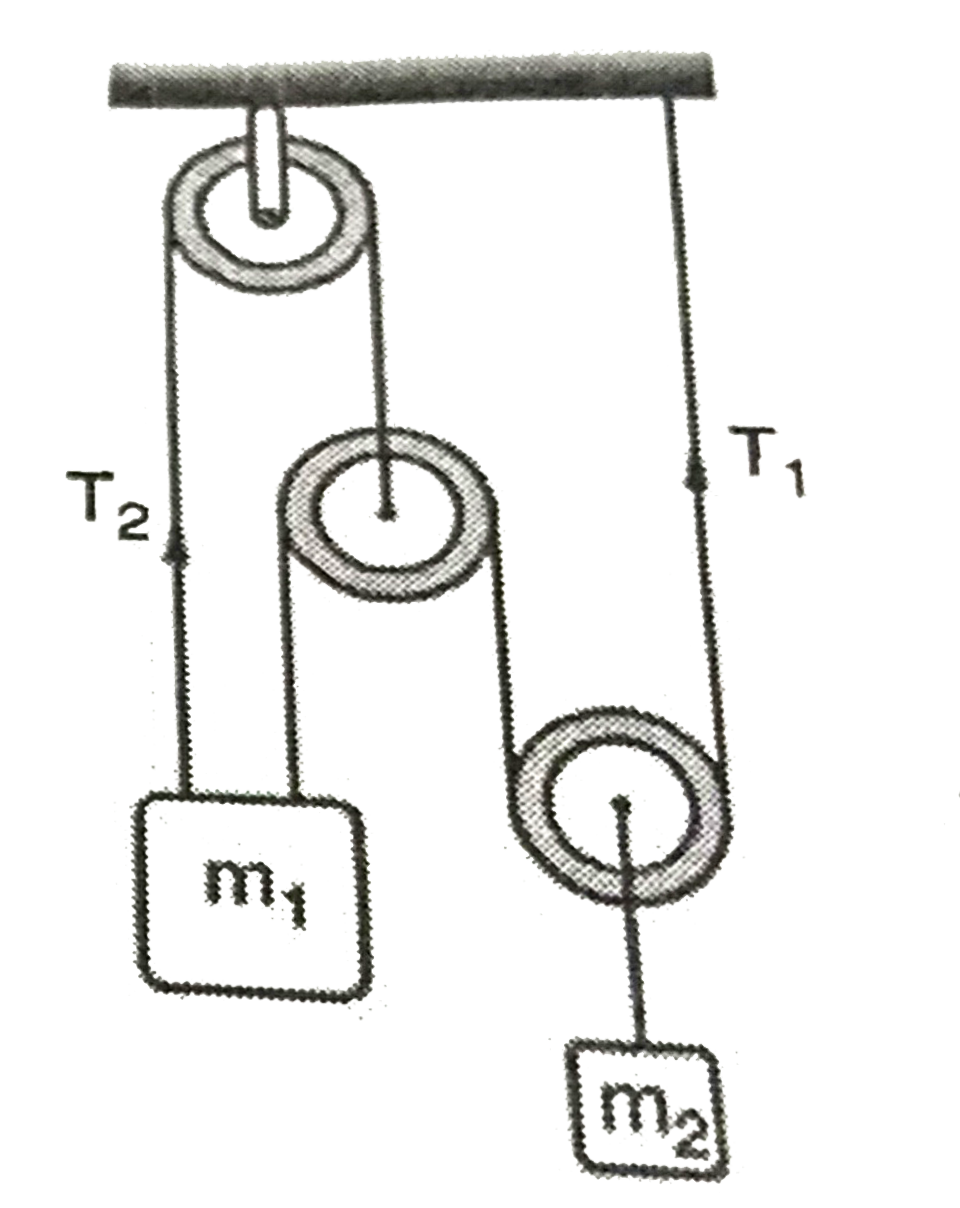
Column -IColumn -II(a)Magnitude value ofacceleration of m1 with respect to ground(p)50019SI units(b)Magnitude value ofacceleration ofm2with respect to ground(q)25019SI units(c)The value of tensionT1(r)6019SI units(d)The value of tensionT2(s)4019SI units(t)None of the aboveView SolutionIn the diagrm shown, all pulleys are smooth and massless and strings are light.
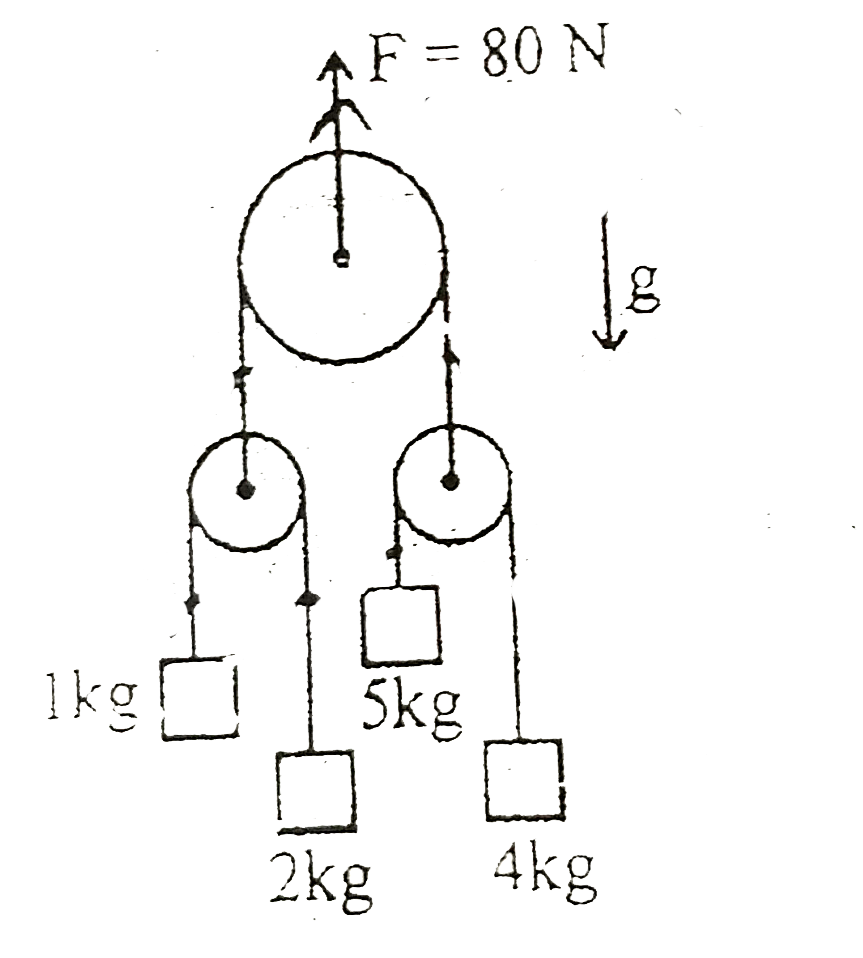
Column IColumn II(A)1kgblock(P)will remains tationary(B)2kgblock(Q)will move down(C)4kgblock(R)will move up(D)5kgblock(S)has acceleration 10m/s2(T)has no accelerationView SolutionIn the diagram shown in figure, all pulleys are smooth and massless and string are light. Match the following columns.

Column IColumn II(A) 1kg block(p) will remain stationary(B) 2 kg block(q) will move down(C) 3 kg block(r) will move up(D) 4 kg block(s)5ms−2(t)10ms−2View Solutionin the figure shown all surface are smooth. Find
(a)acceleration of all the blocks,
(b) net force on4kg and 10kg blocks and ,
( c) force acting between 4kg and 10kg blocks.
 View Solution
View SolutionIn the figure (g=10m/s2 ) .Acceleration of 2kg block is :
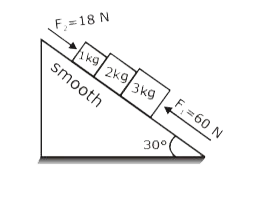 View Solution
View Solution

